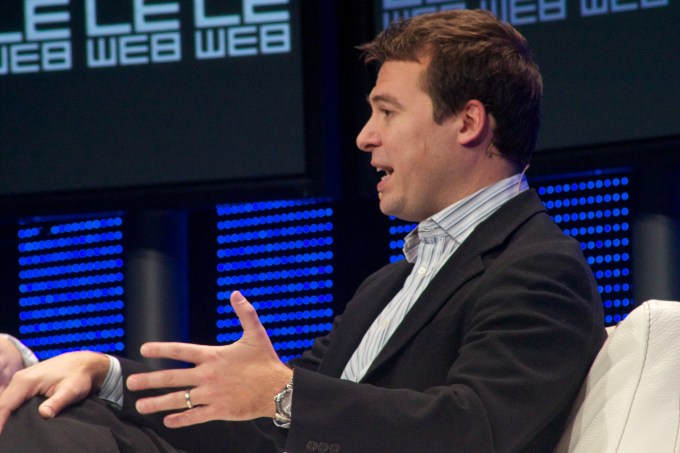It’s finally happening. Ripple is making a push to expand the use of the XRP cryptocurrency into new verticals and segments beyond the payment and banking space where the company is focused.
XRP is the world’s third-largest cryptocurrency behind only bitcoin, the original breakout artist, and Ethereum, the platform that most developers plump for. XRP has a total ‘coin market cap’ of $28.7 billion today, according to Coinmarketcap.com, and yet it is barely used beyond a handful of pilot customer deployments that Ripple has announced.
That might change soon, however, after Ripple announced a new initiative called Xpring — pronounced ‘Spring’ — which is aimed at bringing entrepreneurs and their businesses over to XRP, both the cryptocurrency and the smart ledger, to build an ecosystem. The project will use a mixture of investment, grants, and incubation to lure companies and expand the use of XRP whilst allowing Ripple to continue to focus on its financial services business.
Ripple says it doesn’t control or own XRP — it’s a hotly debated issue since it owns over 60 percent of all tokens — but it has a vested interest in seeing it succeed. Even in the short space of six months the need for variety has been clear.
The value of XRP shot up in December and January during a crypto surge which saw bitcoin reach an all-time high of nearly $20,000 per coin. The collective value of XRP was worth more than $128 billion at peak before a market crash in January walked those prices back significantly. Ripple has come under fire for a perceived lack of use for XRP, which has been marketed as a tool for banks but has attracted only cross-border payment services as customers.
Going beyond Ripple
Ripple has hired Ethan Beard, formerly director of Facebook’s developer network and an ex-EIR at Greylock Partners, to lead Xpring and more broadly Ripple’s developer program.
“The goal is to support businesses that we believe would see benefit from building upon the XRP ledger,” Eric van Miltenburg, Ripple SVP of business operations, told TechCrunch in an interview. “Support will come in a variety of ways: investment, incubation, and the potential of acquisition or grants. We’re focused on proven entrepreneurs who can use the ledger and XRP to really address their customers’ problems.”
Van Miltenburg said Ripple has been approached by entrepreneurs and companies wanting to work with XRP “for years,” but nothing came of discussions because Ripple is focused on financial services.
“There’s been enough interaction to say there’s something here [and] now is the time,” he added. “Over the last four to six months [the idea of Xpring] has really crystallized.”

Ethan Beard speaking at LeWeb in 2010 (via Adam Tinworth/Flickr)
If you’ve been keeping an eye on Ripple this year, the launch of the program won’t be a huge surprise.
Aside from the fact that many in the crypto space are pulling together their own funds — whether it be informally as a company, or more broadly across industries like the Ethereum Community Fund — Ripple has quietly upped its investment focus.
Initially, two Ripple executives took part in a $25 million investment in January for Bay Area-based startup Omni then in March CEO Brad Garlinghouse told TechCrunch that Ripple would “certainly partner with companies that are looking to use XRP in lots of different ways” whilst maintaining its focus as a business.
Xpring is that project.
Enter the Bieber… kinda
Van Miltenburg and Beard told TechCrunch that the kind of segments where they see the most potential for XRP are trade finance, gaming, virtual goods, identity, real estate, media and micro-payments.
When I put it to them that XRP is looking for reasons to justify its $28 billion market cap, van Miltenburg claimed that XRP is far less speculative than other cryptocurrencies.
“There’s a use case we have established for it: Ripple is one of the only enterprise solutions on the blockchain that’s out in production. We believe the XRP ledger and the asset has a performance profile that lends it to others,” he said.
He added that Ripple has seen interest from projects that “started on a blockchain that isn’t living up to their needs,” and that Xpring could focus on rehousing would-be blockchain migrants. However, it won’t be investing in ICOs, buying other tokens or hosting ICOs on the XRP blockchain, van Miltenburg said.
Aside from Omni — which said it will “soon” add XRP as currency in its marketplace service — Xpring has pulled in a couple of early names. Scooter Braun, the man best known for managing Justin Bieber, is “pursuing several endeavors that will use XRP to improve artists’ ability to monetize and manage their content.”
Neither van Miltenburg nor Beard could be specific on exactly what Braun is working on — there are already a number of blockchain-based digital rights and music streaming projects in development — but they said he isn’t one to jump on a bandwagon.
Braun said in a canned statement that he is “excited our team is among the first in the entertainment industry to lean into the blockchain movement.”
“This is only the beginning as we will continue to build out more use cases for XRP,” he added.
Other early partners being announced today include Ripple CTO Stefan Thomas who is transitioning out of his role to build micro-payment services using XRP via a new venture called Coil. In addition, Xpring has backed VC firm Blockchain Capital while Michael Arrington, the founder of TechCrunch, raised his latest fund entirely in XRP.

Ripple CEO Brad Garlinghouse previously spoke of plans to partner with companies on XRP (via Christopher Michel/Flickr)
Building an ecosystem
Generally, the plan for exactly how Xpring will work seems fluid at this point.
Beard spoke of the next wave of innovation coming from the blockchain, much like Facebook’s Timeline and social graph helped scale companies like Spotify, Zynga and BuzzFeed from startups into major tech names. He believes that, in turn, Xpring and XRP can help “build new businesses and change how industries function.”
Van Miltenburg was non-committal in terms of goals.
“Our motivation is to ensure that the XRP ledger and digital asset reaches its full potential. We want to see an extremely healthy and robust XRP ecosystem; that benefits Ripple and all others,” he explained.
Ripple is known to incentive its partners with XRP bonuses for signing, but it isn’t talking numbers this time, either the specific incentives that it is giving to high-profile names like Braun, or the overall budget that it has put behind Xpring.
“For the right opportunities, we can be aggressive. There’s no hesitation or reluctance to make big bets with opportunities that require investment,” is all van Miltenburg would say.
You can bet a large chunk of capital (XRP) is supporting Xpring. The current system with hundreds of cryptocurrencies isn’t sustainable, those that make it through will be the ones that offer the most value, and ecosystems could well be a measure of that. XRP, as the third-largest cryptocurrency, has considerable expectations on it which, as the crash earlier this year showed, can wipe out money faster than it made crypto wealth.
You can bet that Xpring, while outside of Ripple’s core financial services focus, will be a very key focus for building a community and ultimately usage for XRP. The question is how the startup community will reach to a different kind of investment option.
Note: The author owns a small amount of cryptocurrency. Enough to gain an understanding, not enough to change a life.
